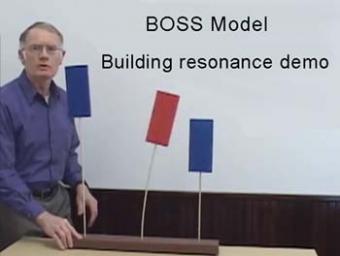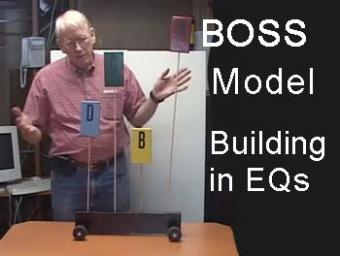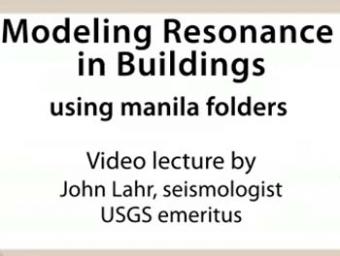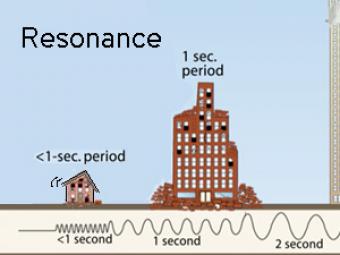John Lahr (USGS seismologist) demonstrates how to use spaghetti noodles and raisins to model building resonance during earthquake ground shaking. This is a "kid-friendly" version of the wood blocks and dowels BOSS model. Here he uses spaghetti noodles of different heights to show how fast or slow vibrations will affect taller or shorter noodles.

The BOSS model is an effective way to show how buildings of different heights respond to seismic waves. All buildings have a natural frequency.

This video lecture shows John Lahr (USGS Seismologist Emeritus) describing the BOSS experiment that models oscillations of different height buildings.

John Lahr, US Geological Survey Seismologist, demonstrating a cheap and kid-friendly version of the BOSS model that shows how buildings of different height oscillate during earthquake shaking.

All buildings have a natural period, or resonance, which is the number of seconds it takes for the building to naturally vibrate back and forth. The ground also has a specific resonant frequency. Hard bedrock has higher frequencies softer sediments. If the period of ground motion matches the natural resonance of a building, it will undergo the largest oscillations possible and suffer the greatest damage.

All buildings have a natural frequency of oscillation or resonance frequency. When seismic waves shake the ground beneath a building at its resonance frequency, the structure will begin to sway back and forth. This concept can be demonstrated in the classroom using the BOSS Model Lite as a discrepant event demonstration to engage students in earthquake-engineered buildings.